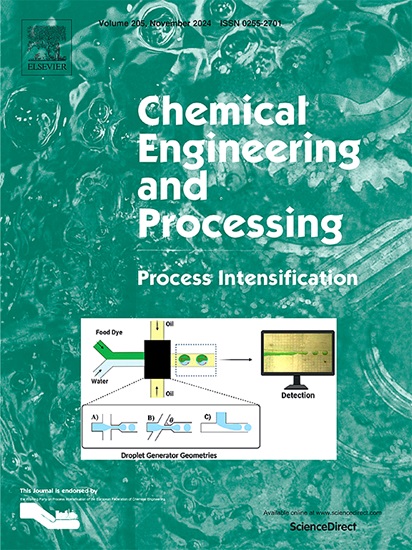Photosensitization optimization in Chlorella: Driving the acclimation-enhanced degradation of sulfonamide antibiotics
IF 3.8
3区 工程技术
Q3 ENERGY & FUELS
Chemical Engineering and Processing - Process Intensification
Pub Date : 2025-01-27
DOI:10.1016/j.cep.2025.110196
引用次数: 0
Abstract
The proliferation of sulfonamide antibiotics (SAs) in aquatic ecosystems poses a severe threat to environmental integrity and human well-being. This research employs an acclimation strategy using Chlorella pyrenoidosas to enhance the photo-sensitized degradation efficacy of sulfamethoxazole (SMX) and sulfisoxazole (SIZ). The acclimated Chlorella exhibits remarkable degradation capabilities, with improvements of approximately 9.7 times for SMX and 4.2 times for SIZ, respectively, compared to non-acclimated strains. These improvements are linked to increased growth rates, higher chlorophyll levels, enhanced extracellular organic matter (EOM) production, and elevated antioxidant enzyme activities. The enhanced performance is attributed to refined enzymatic and metabolic processes promoting photosynthesis, energy conversion, and the degradation of SAs. Through response surface methodology, this approach is refined to achieve optimal water remediation results, attaining a degradation rate of 78.04 %. The EOM content increases by up to 68.33 %, while growth rates improve by 1.06 to 1.14 times, indicating superior tolerance. A biphasic response to antibiotic concentrations is also observed, where low concentrations facilitate degradation while high concentrations have an inhibitory effect. This characteristic is reflected by significant increases in antioxidant enzyme activities, particularly in the case of glutathione reductase (GR) and catalase (CAT) at concentrations below 1 mg/L.

求助全文
约1分钟内获得全文
求助全文
来源期刊
CiteScore
7.80
自引率
9.30%
发文量
408
审稿时长
49 days
期刊介绍:
Chemical Engineering and Processing: Process Intensification is intended for practicing researchers in industry and academia, working in the field of Process Engineering and related to the subject of Process Intensification.Articles published in the Journal demonstrate how novel discoveries, developments and theories in the field of Process Engineering and in particular Process Intensification may be used for analysis and design of innovative equipment and processing methods with substantially improved sustainability, efficiency and environmental performance.
文献相关原料
公司名称
产品信息
阿拉丁
Sulfisoxazole (SIZ)
阿拉丁
Sulfamethoxazole (SMX)

 求助内容:
求助内容: 应助结果提醒方式:
应助结果提醒方式:


